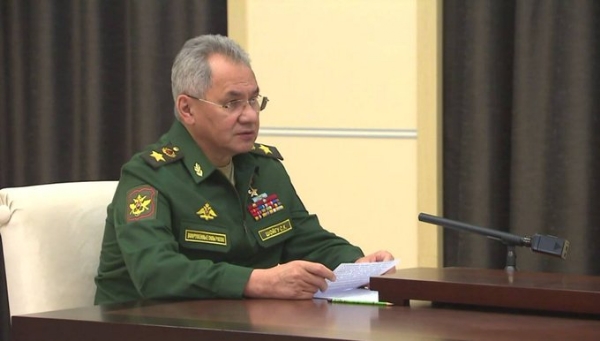Russian partial mobilization complete: Kremlin
29 Oct 2022 13:30:20
Moscow, Oct 29: Russia said on Friday it had finished calling up reservists to fight in Ukraine, having drafted hundreds of thousands in a month and sending more than a quarter of them already to the battlefield after a divisive mobilization campaign that was its first since World War Two.

The United States, meanwhile, announced it would send another $275 million in military assistance to Ukraine, including arms, munitions, and equipment from Pentagon inventories, bringing U.S. military assistance to the country under the Biden administration to more than $18.5 billion.
U.S. Secretary of State Antony Blinken said Washington was working to provide Ukraine with the air defence capabilities it needs, with two initial sophisticated anti-aircraft NASAMS ready for delivery to the country next month. He said the United States was also working with allies and partners to enable the delivery of their own air defence systems to Ukraine. Ukraine's President Volodymyr Zelensky said he doubted Moscow was finished calling up soldiers. In his nightly televised address, he said Russian forces "are so poorly prepared and equipped, so brutally used by their command, that it allows us to presume that very soon Russia may need a new wave of people to send to the war." The divisive mobilization drive has seen tens of thousands of men flee the country and gave rise to the first sustained public protests against the war. "The task set by you of (mobilizing) 300,000 people has been completed. No further measures are planned," Defence Minister Sergei Shoigu told President Vladimir Putin at a televised meeting in the Kremlin. He said 82,000 had already been sent to the combat zone and the rest were training. Putin thanked reservists "for their dedication to duty, for their patriotism, for their firm determination to defend our country, to defend Russia, which means their home, their family, our citizens, our people." Both men acknowledged "problems" in the early days of the call-up. Shoigu said initial issues in supplying newly mobilized troops had since been resolved. Putin said mistakes had probably been inevitable as Russia had not carried out a mobilization for such a long time, but that lessons had been learned. The mobilization Putin ordered last month after his forces suffered major battlefield setbacks was the first time most Russians faced a direct personal impact from the "special military operation" he launched in February. More than 2,000 people were arrested in anti-mobilization protests, notably in parts of Russia populated by ethnic minorities who complained they were being disproportionately targeted to be sent to the front. Putin ordered the call-up when he endorsed plans to annex Ukrainian lands. The West describes those moves as an escalation in response to battlefield setbacks that showed Russia was on course to lose the war. Western military analysts have said the call-up could help ease Moscow's shortages of manpower along the 1,000-km (600-mile) front line, but the draft's military value will depend on whether Moscow can properly equip and train the reservists. Meanwhile, Kyiv has continued to make gains. Serhiy Gaidai, the Ukrainian governor of Luhansk province, said on Friday that Ukrainian troops had practically gained full control of an important road connecting Svatove and Kreminna, major towns seen as the next big battlefront in the east. Reuters could not independently verify the claim. In the south, Ukrainian forces have advanced this month towards Kherson, the biggest city Russia has captured intact since its February invasion. It is at the mouth of the wide Dnipro River that bisects Ukraine and the surrounding region and controls land approaches to Crimea, which Moscow has held since 2014. The Ukrainian advance appears to have slowed in recent days, however, with Kyiv blaming poor weather and tough terrain. Troops dug into muddy trench lines north of the city and exchanged rocket, mortar, and artillery fire.
Also Read: Former US president Trump acknowledges Hinduphobia, promises Hindu holocaust memorial in US
Ukrainian soldiers manning a 120 mm mortar hidden in bushes loosed high explosive rounds in thundering bursts of flame at Russian positions around a grain silo less than a kilometer away. Hennadyi, 51, said the Russians were using the silo for cover and observation. It poked like a finger above a vast expanse of fields, a column of smoke floating behind it. Hennadyi said Ukrainian gunners were targeting Russian armored vehicles and ammunition behind the silo and avoiding hitting the structure itself because of its importance to the agricultural region. But they did not have enough shells, he said.